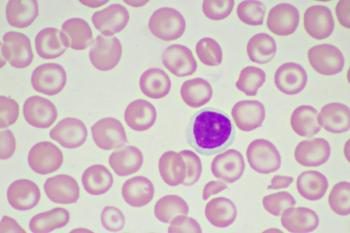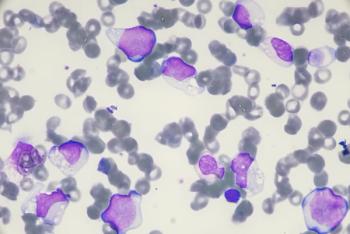
Emerging data indicate that COVID-19 is also characterized by inflammation present in the heart and other organs

Luke Halpern is an assistant editor with Pharmacy Times. Luke wrote for Pharmacy Times in the summer of 2023, and assumed a full-time role in June 2024. His work has been featured in Pharmacy Times and the American Journal of Managed Care. He graduated from the University of Massachusetts, Amherst in May 2024.

Emerging data indicate that COVID-19 is also characterized by inflammation present in the heart and other organs

Richard Lewis discusses the critical role pharmacists and health care providers play in ensuring safe administration of IVIG for patients with CIDP.

Thalassemia, a chronic blood condition that reduces hemoglobin levels, requires a hands-on approach from pharmacists in patient monitoring and diagnosis.

Circulating lactate is increased in patients with myelofibrosis and corresponds with the remodeling of lactate export channel monocarboxylate transporter 4, suggesting a link with fibrosis establishment.

BR55, an injection of perfluorobutane/nitrogen lipopeptide-coated microbubbles, could aid in the detection of angiogenesis and allow for earlier diagnosis in patients with Crohn disease.

Pharmacists should educate patients on abelacimab's potential therapeutic impact on atrial fibrillation patients at risk of stroke.

Proper nutrition and awareness of potential side effects from GLP-1 medications are essential for patients undergoing treatment.

Compared with other treatments for myasthenia gravis, nipocalimab demonstrated more significant improvements in disability scores, with tolerable safety.

The designation builds on previous regulatory action for ADI-001 and allows for expedited development of the treatment for systemic lupus erythematosus.

Donna Ryan discusses the landscape of GLP-1 medications and the lineup of indications that the drug class has received indications for in recent years.

More accurate prognostic risk assessment could aid pharmacists in the management and counseling of patients with primary myelofibrosis.

Often an indicator of fibrosis or damage to the heart, late gadolinium enhancement was found to be unaffected by the administration of intravenous immunoglobulin (IVIG) in pediatric patients with myocarditis.

Higher p16 expression in patients with sickle cell disease led to heightened risk of age-related complications.

Christian Ruff explains the strong efficacy associated with abelacimab compared with rivaroxaban in the AZALEA-TIMI 71 trial.

An inverse relationship was observed between genetic conditions associated with high levels of low-density lipoprotein cholesterol and the risk of developing T2D.

The approval marks the first subcutaneous infusion device approved for the treatment of Parkinson disease, providing a new option for patients with serious disease who are unresponsive to other therapies.

These results provide a pediatric lens into the potential risk of thromboembolic events in patients with dermatomyositis.

Myelofibrosis patients with CALR mutations have lower responses to symptoms and higher rates of anemia after 6 months of therapy with ruxolitinib.

Donna Ryan, MD discusses GLP-1 medications and new developments on the horizon, while providing some best practices for patients initiating treatment, including important nutritional and lifestyle changes,

Diagnosing anemia, a serious and common complication of patients with myelofibrosis, could be made easier with the use of red cell distribution width assessment.

Data indicates fedratinib’s role as an effective second-line treatment in patients with myelofibrosis who have been previously treated with a JAK inhibitor, such as ruxolitinib, though more research is necessary.

Through similar targeting of the RdRp enzyme, these treatments could offer groundbreaking new options for patients with COVID-19 if proven effective in real-world trials.

Preliminary phase 1 trial results demonstrate that patients with small cell lung cancer generated early clinical activity after being administered ZL-1310.

The new indication for semaglutide adds to the long list of conditions that the GLP-1 receptor agonist has been approved for, and provides a new option for high-risk patients with these chronic conditions.

The antibody-drug conjugate shows efficacy in reducing disease progression risk and increasing progression-free survival in patients with HR+, HER2-low, or HER2-ultralow metastatic breast cancer.

Patients with myelofibrosis have a higher likelihood of having a cardiovascular risk factor when compared with essential thrombocythemia or polycythemia vera.

Administered every 4 weeks, the approval could serve as a breakthrough for easier and more effective care for patients with early Alzheimer disease.

Patients recovering from COVID-19 and caregivers reported how some social determinants of health were helpful in their recovery, while others led to difficult social and mental challenges.

Stem cell transplantation rates increased the longer patients remained on therapy for myelofibrosis.

The FDA approved treosulfan, in combination with fludarabine, for patients 1 year of age and older with acute myeloid leukemia (AML) or myelodysplastic syndrome (MDS).